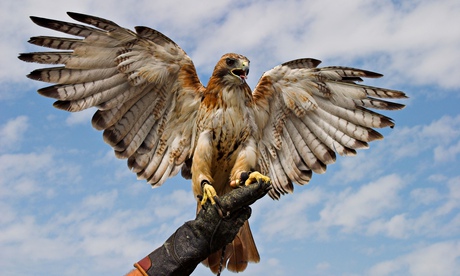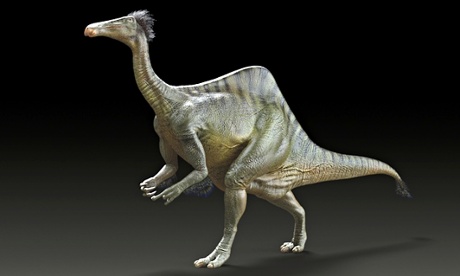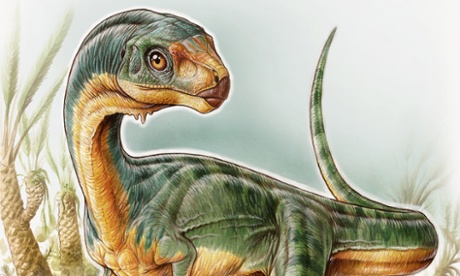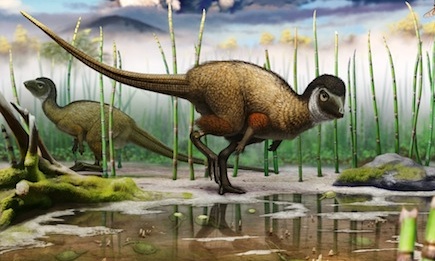Fossil hunters have excavated the remains of a lumbering, plant-eating dinosaur whose hips were so impressive they named it "thunder thighs".
The chunky-legged sauropod roamed the Earth 110m years ago and shared the land with agile, carnivorous raptors that it may have fended off with devastating kicks.
Brontomerus mcintoshi could deliver a kick nearly three times as powerful as that from similar-sized sauropods, a weapon that males may also have unleashed on each other when fighting over females in the early Cretaceous, researchers said.
"It may be that males lined up next to each other, side by side, and kicked the crap out of each other," said Mike Taylor, a palaeontologist and lead author on the study at University College London.
"Brontomerus" means "thunder thighs", while "mcintoshi" is in honour of John McIntosh, a retired US physicist, dinosaur hobbyist and world authority on sauropods.
Bones, including a hip bone, a shoulder blade and a rib, belonging to an adult and a juvenile were unearthed at a quarry near the Colorado river in Grand County, Utah, in 1994, but palaeontologists had failed to appreciate their significance.
The adult was as tall as an elephant, weighed around six tonnes, and measured 14 metres from nose to tail. The juvenile was 4.5 metres long and weighed approximately 200kg. They may have been a mother and her young.
The dinosaur earns its nickname from a sturdy bone plate that projects forwards from the hip bone and provides an anchor point for the beast's substantial leg muscles. In Brontomerus, this bone is between 31% and 55% longer than the same bone in other sauropods.
Details of the discovery are reported in the journal, Acta Palaeontologica Polonica.
Unusual bumps on the shoulder blade probably mark where the front leg muscles were attached, and their size suggests that these too were unusually bulky. "Perhaps Brontomerus lived in rough, hilly terrain and the powerful leg muscles were a sort of dinosaur four-wheel drive," said co-author Matt Wedel of Western University of Health Sciences in California.
Brontomerus is the latest of several dinosaur finds in the past 20 years that overturn a previously held idea that sauropods died out in the early Cretaceous. The unusual hip bone of Brontomerus suggests that not only were sauropods still alive and kicking, they were a biologically diverse group of animals.
"This tells us that sauropod evolution was going in new directions and exploring many more different niches than we were aware of before," said Taylor.











